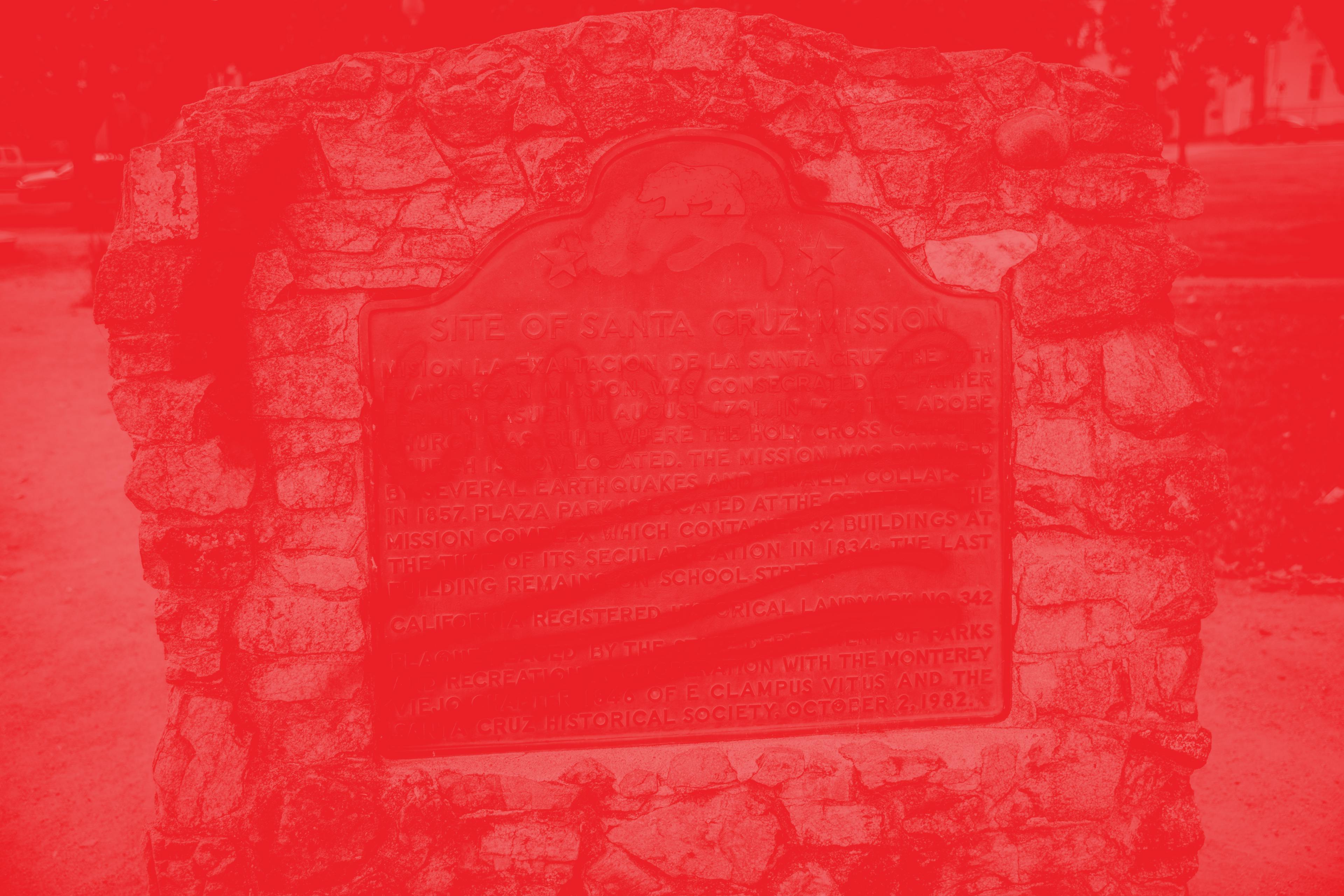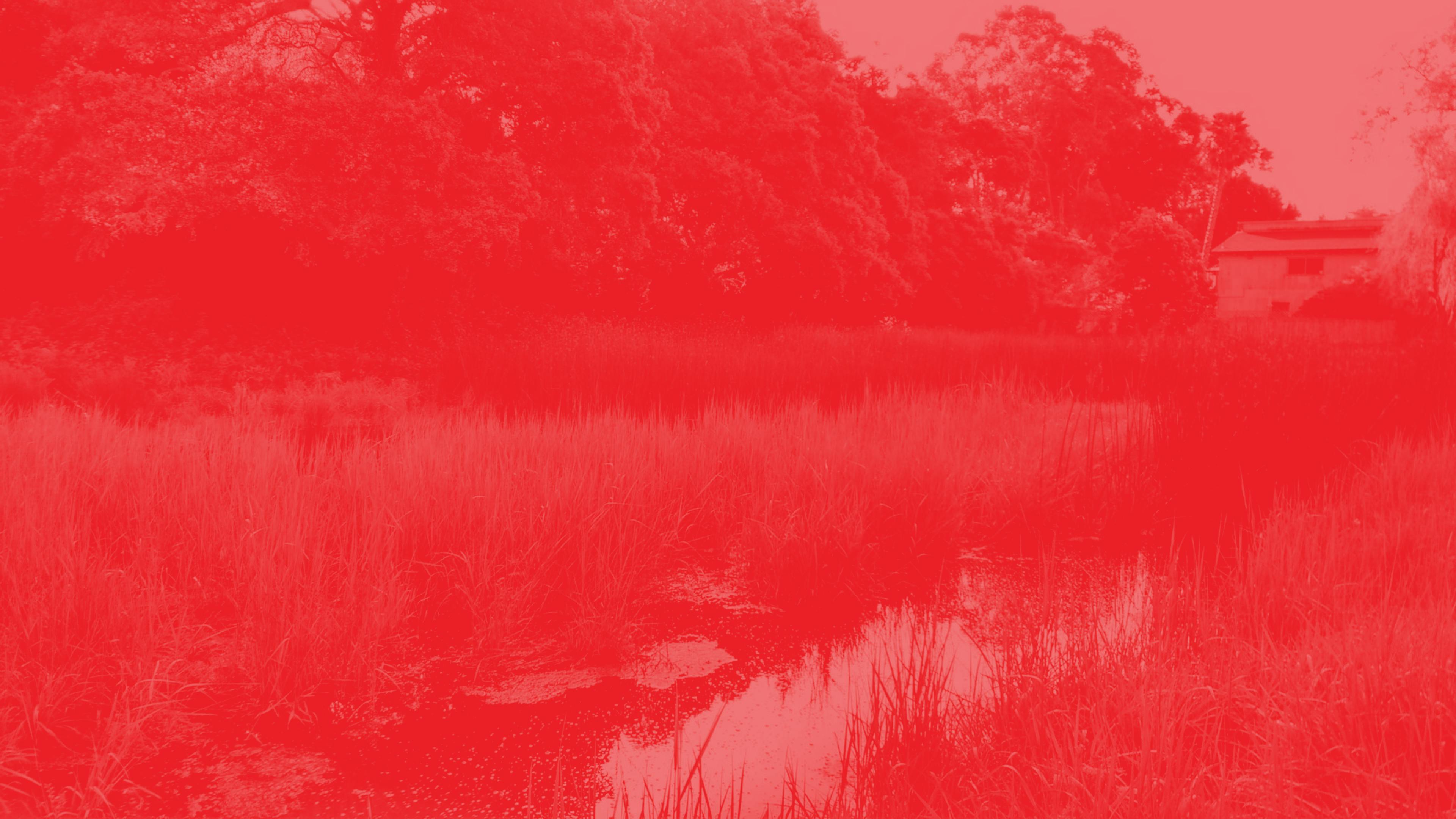
Abolition Ecology in the Jessie Street Marsh
As part of its ongoing organizing around abolition ecology and environmental racism, the DSA Santa Cruz Ecosocialist Working Group is organizing iNaturalist BioBlitz event in the Marsh on June 23. We'll be using the iNaturalist app to record observations of plants and animals in the freshwater and saltwater marsh habitats in this little-known city greenspace (see https://www.inaturalist.org/projects/jessie-street-marsh for more info.)
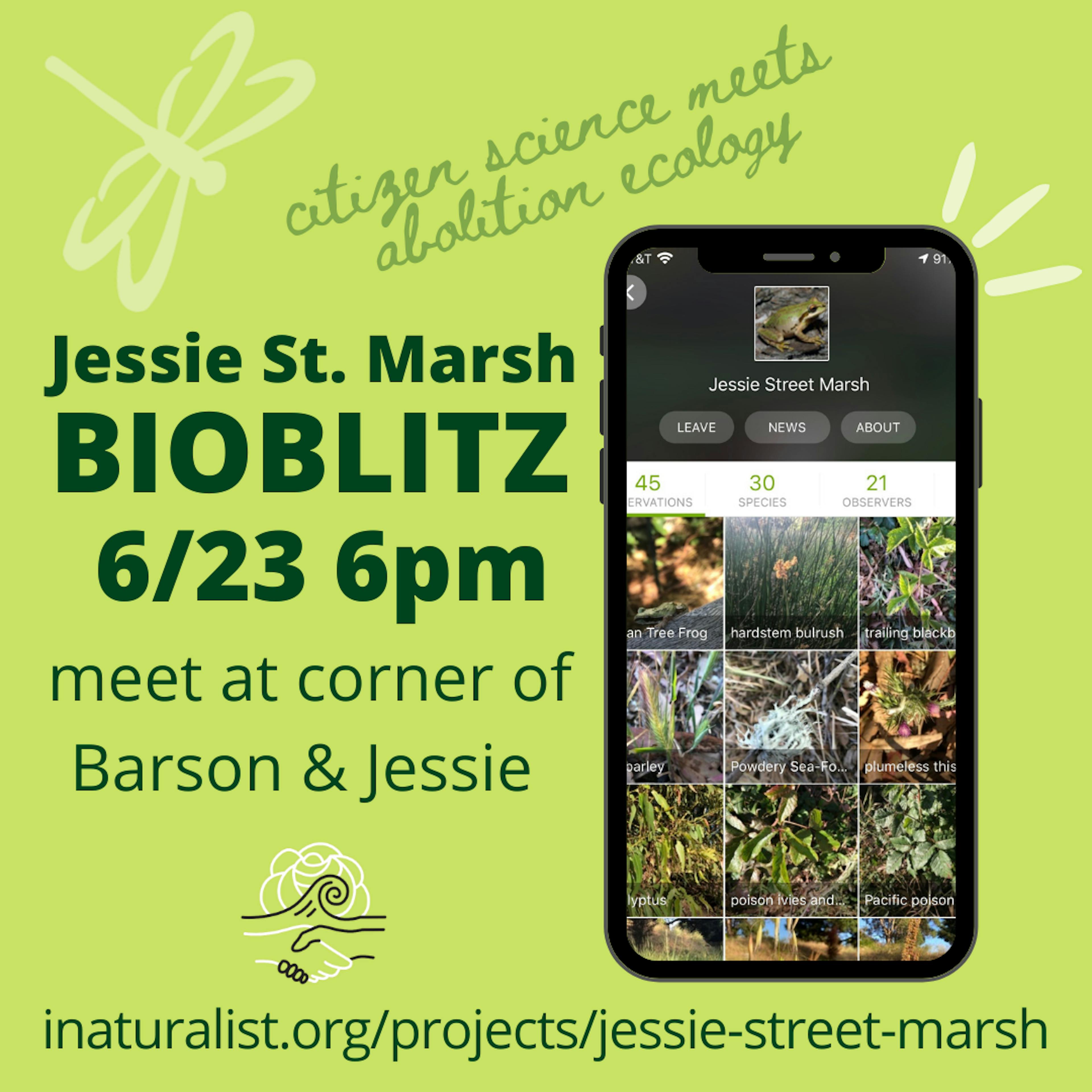
What is the Jessie Street Marsh?
The city of Santa Cruz acquired the Marsh in 1991 as a required mitigation for expanding the wastewater treatment plant at Neary Lagoon. However, rather than restoring the Marsh and building amenities for the public such as paths, interpretive panels, scenic overlooks, and benches, the Parks and Recreation Department’s management of the marsh has concentrated on wholesale vegetation removal and policing. This is consistent with the pattern noted by police abolitionists such as Ruth Wilson Gilmour, in which whiter, higher-income areas receive resources whereas lower-income, non-white neighborhoods are marked out for neglect or “organized abandonment”, coupled with higher rates of policing and incarceration.
Why do we want to document the species in the Marsh?
Rather than wait for the city to conduct a full biological survey of the wetlands habitat it has mismanaged over the years, we can take collective action to create a research-quality record of the biodiversity there.
A series of marshy events
The BioBlitz event builds on a previous neighborhood event organized by the Ecosocialist Working Group in February, "Return of the Frogs" was an opportunity to celebrate our comrades, the frogs, as well as to educate, agitate, propagate, and organize. The event featured art, performance, educational activities organized by elementary grade students from Monarch school. Visitors were able to walk through time in an exhibit of historic photos, and even enter an alternate timeline...
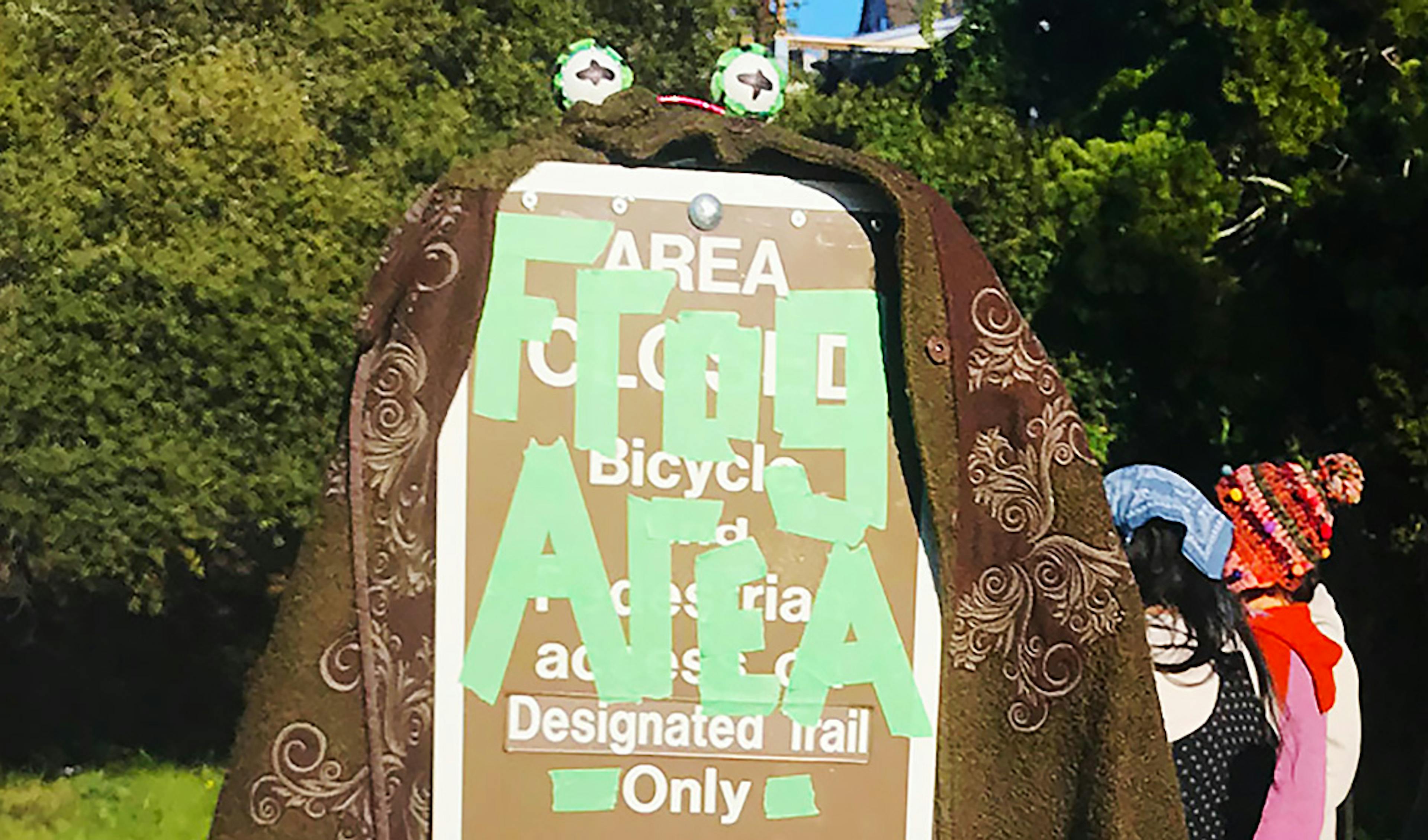
A walk through time: a brief history of the marsh
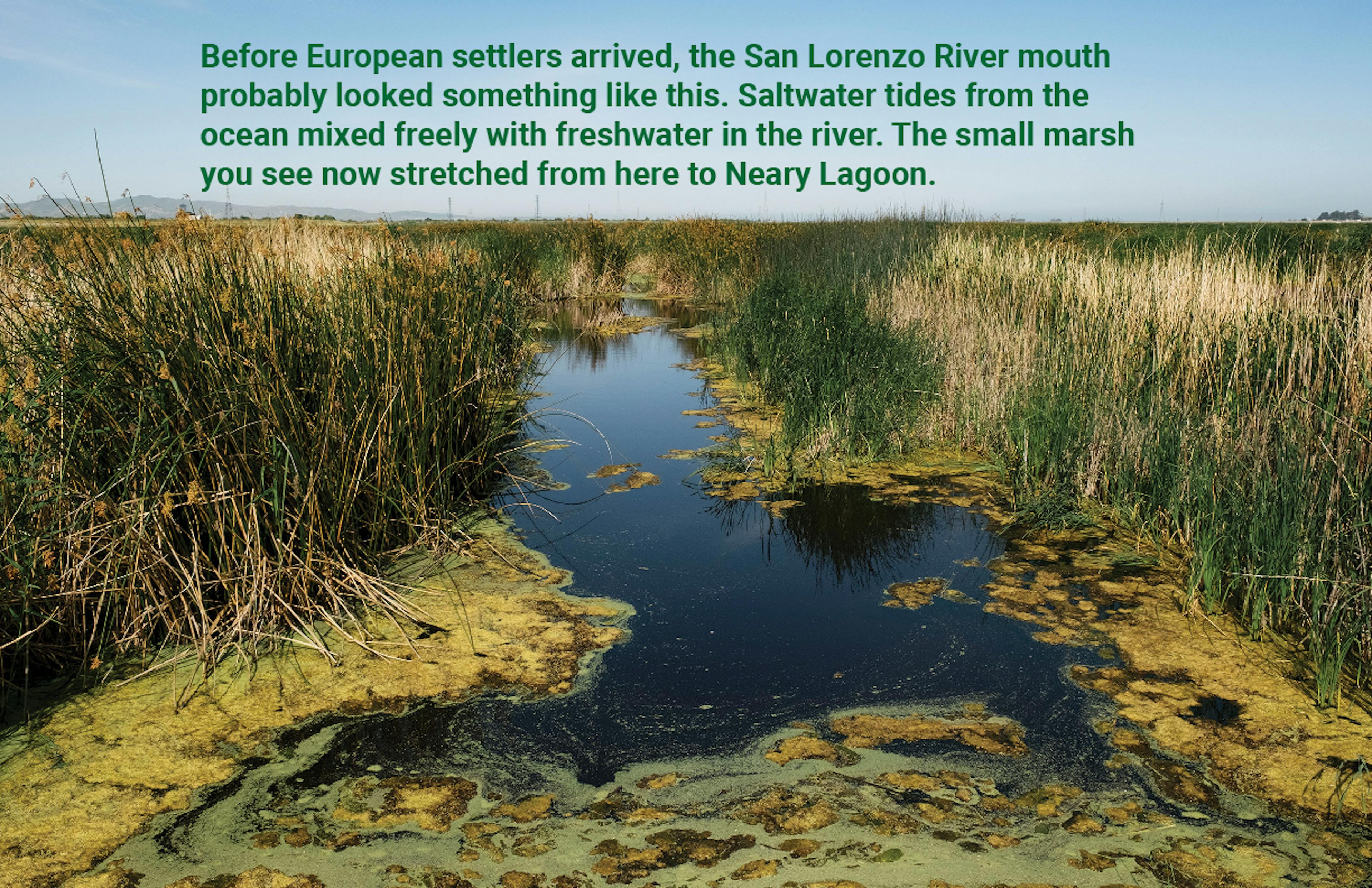
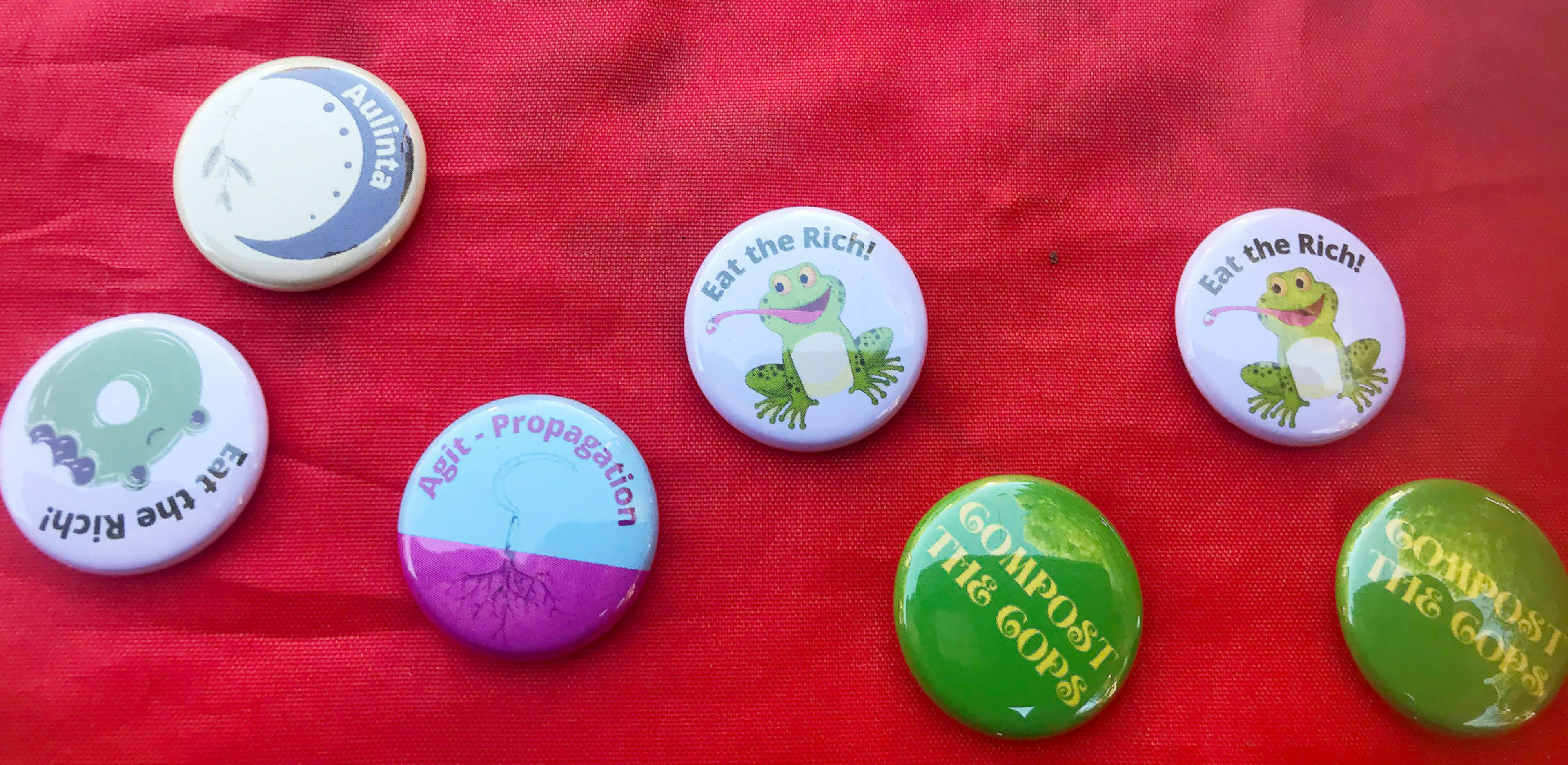
Buttons designed by comrades

Janina Larenas of Little Giant Collective designed these beautiful bandanas, other comrades sewed hems and helped with screenprinting, and the Fábrica provided material.
Re-interpretive natural history panel
A 3.5 ft by 2.5 foot “re-interpretive panel” was created and temporarily mounted near the Barson St entrance to the marsh. It uses the tropes of official city interpretive panels installed in open spaces and parks, but inflected with ecosocialist messages and abolition ecology perspectives.

A marsh in our neighborhood | Una marisma en nuestro barrio
This marsh is a community of interacting plants, insects, amphibians, reptiles, birds and human beings. Esta marisma es una comunidad de plantas, insectos, anfibios, reptiles, aves y seres humanos en interacción.
A renewable storehouse | Un almacén renovable
Marshes are one of the most generative ecosystems in the world. Indigenous people around the world use marsh plants like tules, cattails, and willows to create houses, boats, and baskets, and as a source of food and medicine. With care, these resources can be used and renewed indefinitely. When trees and plants are carelesssly mown down in order to police public space, the marsh becomes poorer.
Las marismas son uno de los ecosistemas más generativos del mundo. Los pueblos indígenas de todo el mundo usan plantas de las marismas como tules, espadañas y sauces para crear casas, botes y cestas, y como fuente de alimentos y medicinas. Con cuidado, estos recursos se pueden utilizar y renovar indefinidamente. Cuando los árboles y las plantas se cortan descuidadamente para vigilar el espacio público, el hábitat de la marisma se empobrece.
Water is Life | El agua es vida
Many animals in the marsh, such as dragonflies, mosquitoes and frogs, spend part of their lives in the water. Development and private property shrink and drain the marsh. When water is drained from the marsh, the web of life that connects the marsh community cannot survive.
Muchos animales de la marisma, como libélulas, mosquitos y ranas, pasan parte de su vida en el agua. El desarrollo urbano y la propiedad privada reducen y drenan la marisma. Cuando se drena el agua de la marisma, la red de vida que conecta a la comunidad de la marisma no puede sobrevivir.
Save the Frogs | Salvar a las ranas
The loud chorus of frogs that we hear every spring marks the start of a new cycle of life. But around the world, frogs and other amphibians are dying in huge numbers. We can help save the frogs by taking care of this marsh.
El fuerte coro de ranas que escuchamos cada primavera señala el inicio de un nuevo ciclo de vida. Pero en todo el mundo, las ranas y otros anfibios están muriendo en grandes cantidades. Cuidando esta marisma, podemos ayudar a salvar a las ranas
Abolition Ecology | La Ecología de Abolición
Abolition Ecology identifies places in the landscape where the prison industrial system and ecological destruction converge, and works to imagine an ecosocialist horizon beyond the police state.
La Ecología de Abolición identifica los lugares en el entorno donde convergen el sistema industrial penitenciario y la destrucción ecológica, y trabaja para imaginar un horizonte ecosocialista más allá del estado policial.
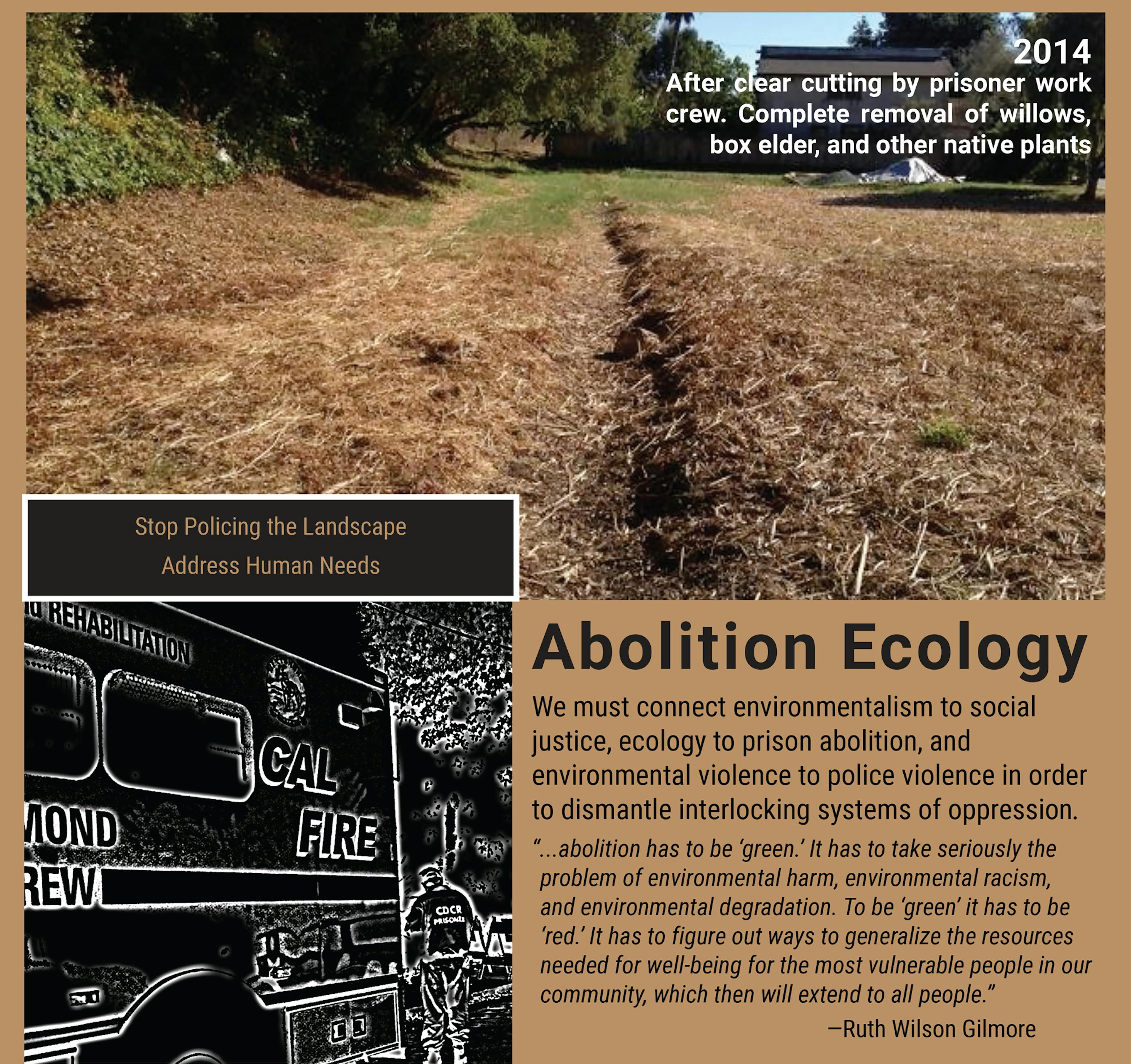
A note on vegetation removal as seen in the above poster: In the 20+ years the city has managed the Marsh habitat, the main focus of Parks Department’s work has been to remove vegetation to make policing easier, without doing anything to increase biodiversity or enhance the habitat. It is not that mowing or vegetation removal are always bad: here are many habitats in california that benefit from a careful disturbance regime, like grazing, fire, or mowing. But the mowing at JSM has not been employed as part of an ecological stewardship approach, and this must change.
About Abolition Ecology
Abolition Ecology is a lens to view the intersections of policing, surveillance and the prison industrial complex with capitalism extraction and exploitation destroying the planet's ecosystems. Abolition Ecology identifies points of convergence in the landscape where carceral capitalism and ecological destruction meet and works to imagine an ecosocialist horizon beyond the police state.
Our notion of “abolition ecology” is inspired by the work of prison abolitionist Ruth Wilson Gilmore. She explains “...abolition has to be ‘green.’ It has to take seriously the problem of environmental harm, environmental racism, and environmental degradation. To be ‘green’ it has to be ‘red.’ It has to figure out ways to generalize the resources needed for well-being for the most vulnerable people in our community, which then will extend to all people.” We argue that this optic is essential in connecting environmentalism to social justice, ecology to decarceration, and environmental violence to police violence, which broadens our politics to a radical intersectionalist approach to oppression and justice.
In our understanding, to be red and green points to the work of Red Nation, who theorize “red” as both indigenious and socialist. In their 2020 pamphlet Communism is The Horizon, Indigenious Feminism is the Way, they write “Communism is our past and our horizon. Indigenous people have always been communists. We call for communism in our prayers because communism is our rightful relation with the earth. When we hear “from the bottom up,” we think of liberation achieved from reflecting on the experiences of life from the grassroots to the next world—literally that which emerges from below the earth and grows upward to greet the sun.”
Indigenous people have always been communists. We call for communism in our prayers because communism is our rightful relation with the earth. When we hear “from the bottom up,” we think of liberation achieved from reflecting on the experiences of life from the grassroots to the next world—literally that which emerges from below the earth and grows upward to greet the sun.
The Red Nation, "Communism is the Horizon"
How far could you jump if you were a Pacific Tree Frog?
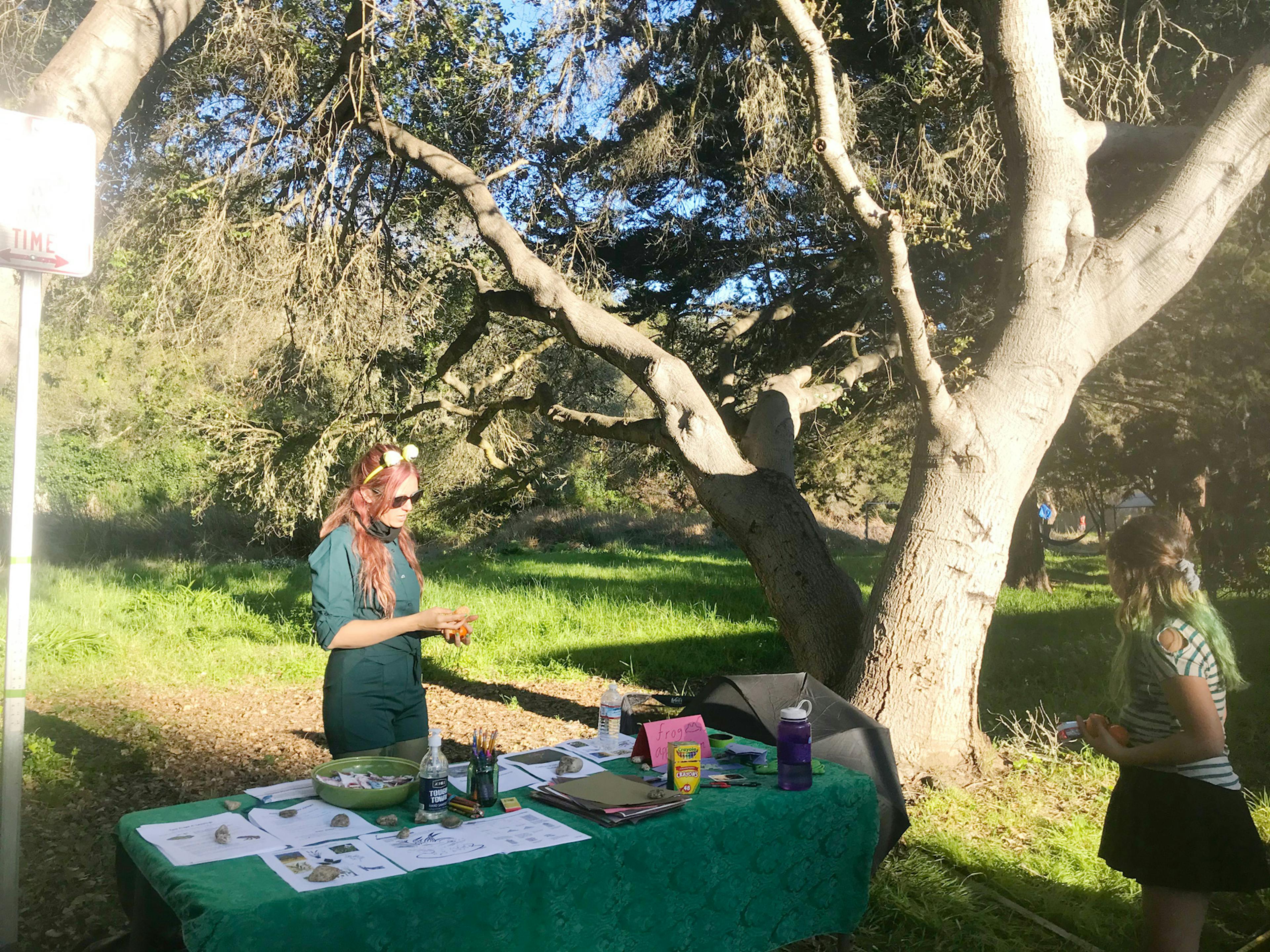
This was one of the questions posed by a frog activity station developed by parents and kids from Monarch Community School.

Graffiti re-imagined to be less phallo-centric, in line with our program to “de-center the dick in all policies.
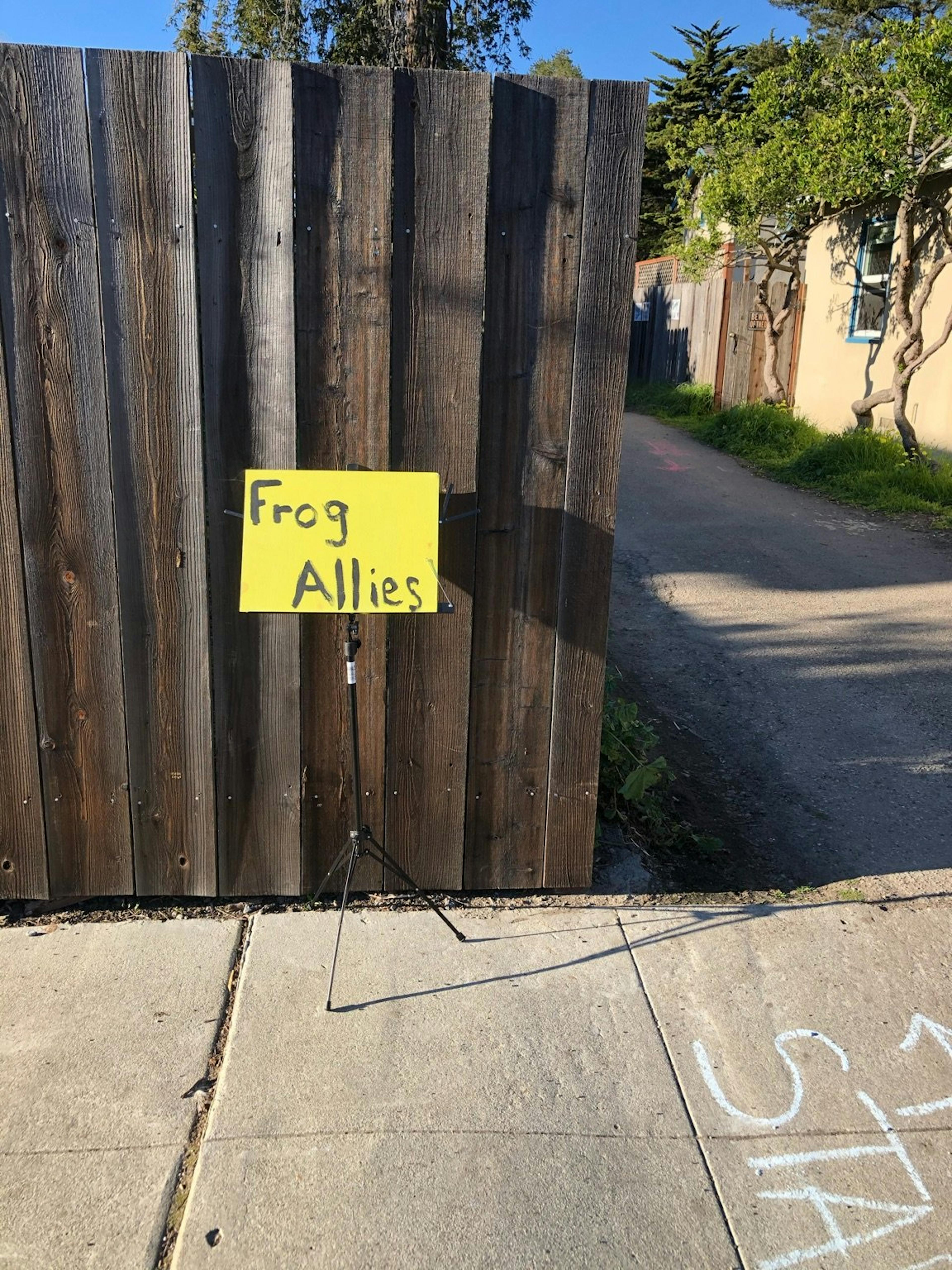
Frog Allies in the Alley
RIB-BIT!
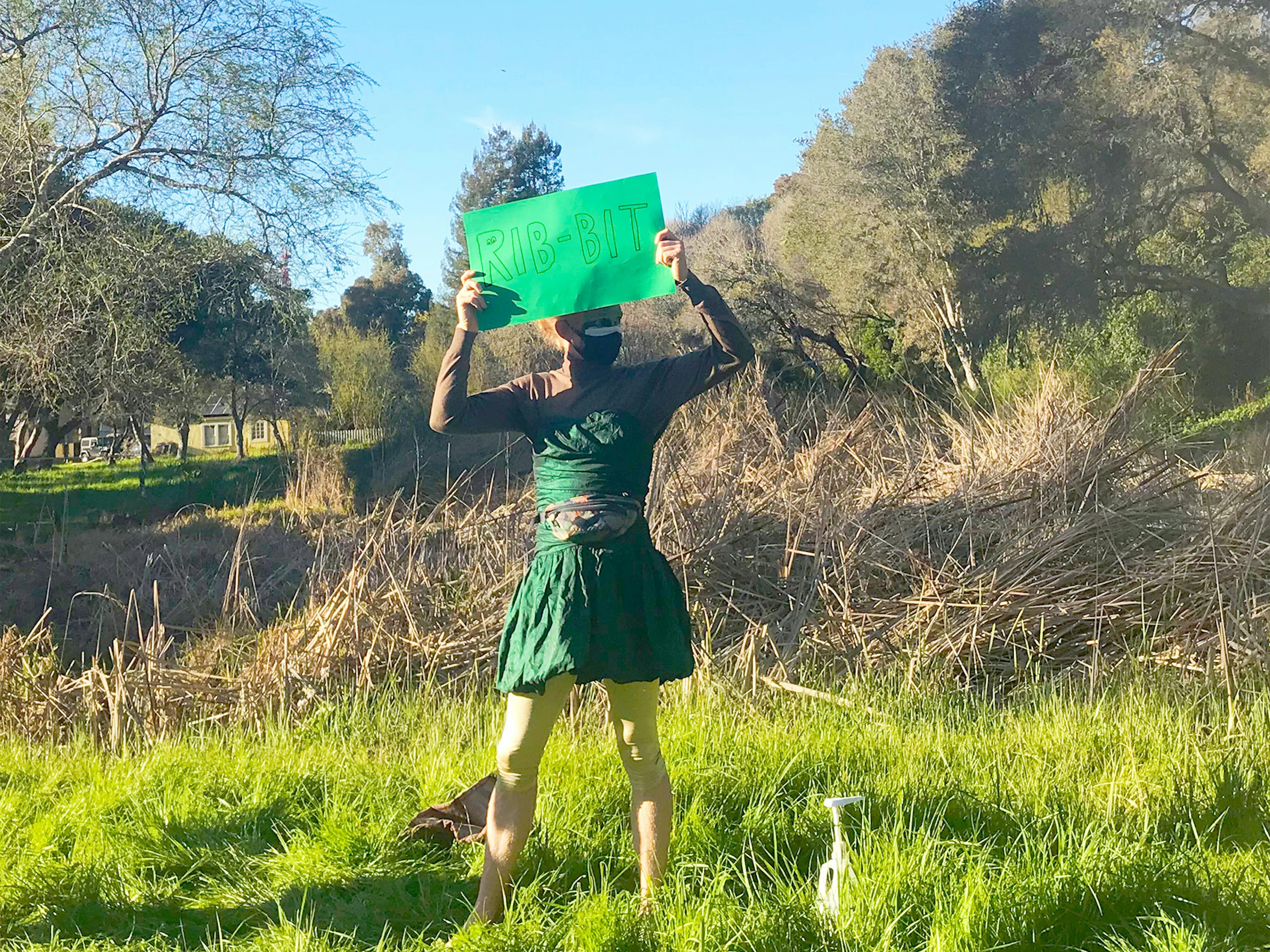
Participatory performance by the lovely and talented Jesse and Pennsky invited visitors to take on a froggy perspective.
Portal to an Alternate Timeline
The path through the marsh led visitors through a portal into an alternate timeline, in which the Renewable Energy/ Environmental Justice Revolution created an anti-colonial, post-scarcity, post-capitalist world. Santa Cruz has been re-named Aulinta, one of the possible indigenous names for a village at the mouth of the San Lorenzo. In Aulinta, this spot is home to the Phoebe Marsh Interpretive Center. Volunteers from the center welcomed the time travellers from Santa Cruz with tea and cookies, and answered questions about Aulinta and the restoration of Phoebe Marsh.
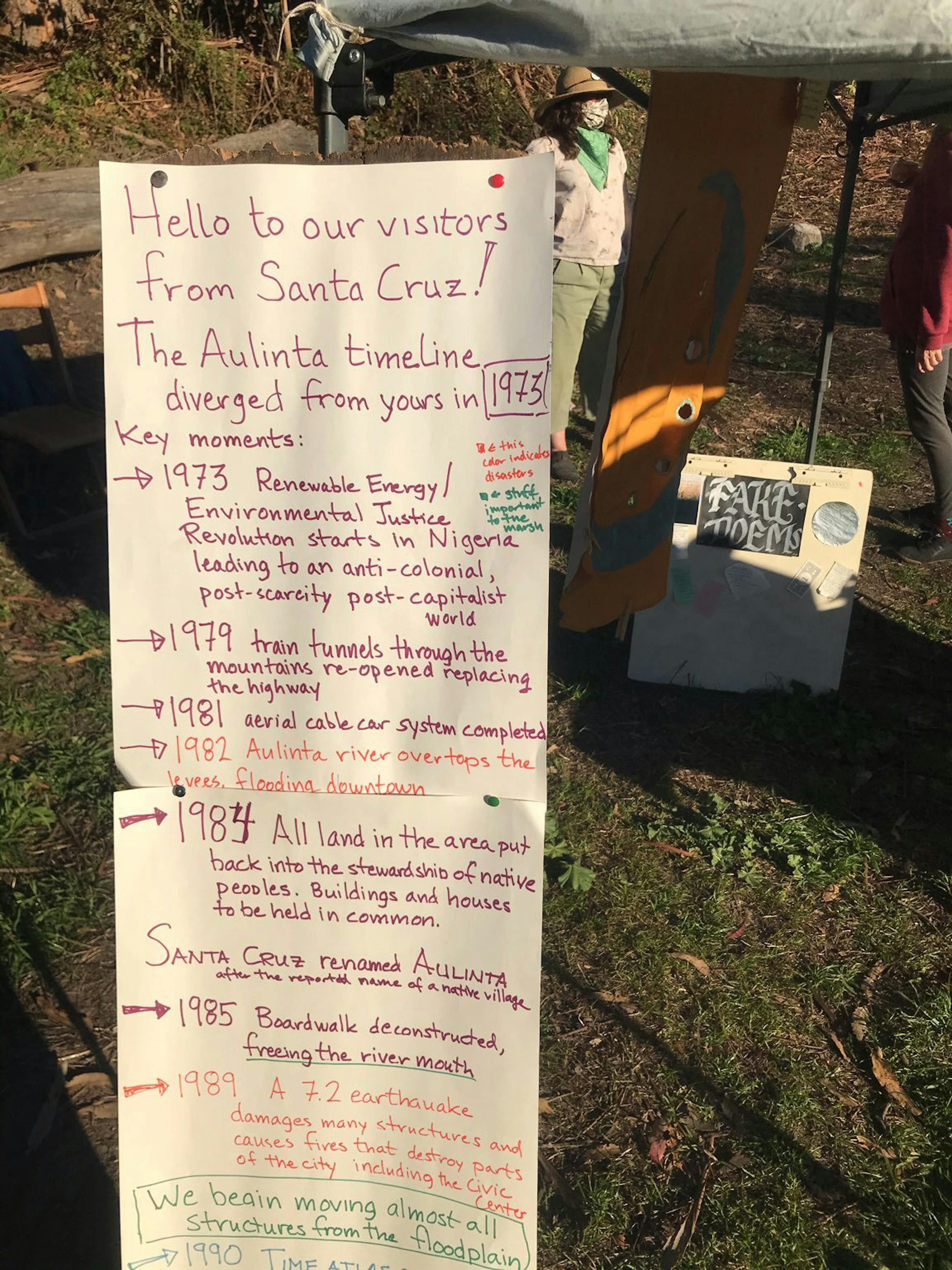
Welcome sign and Aulinta history timeline
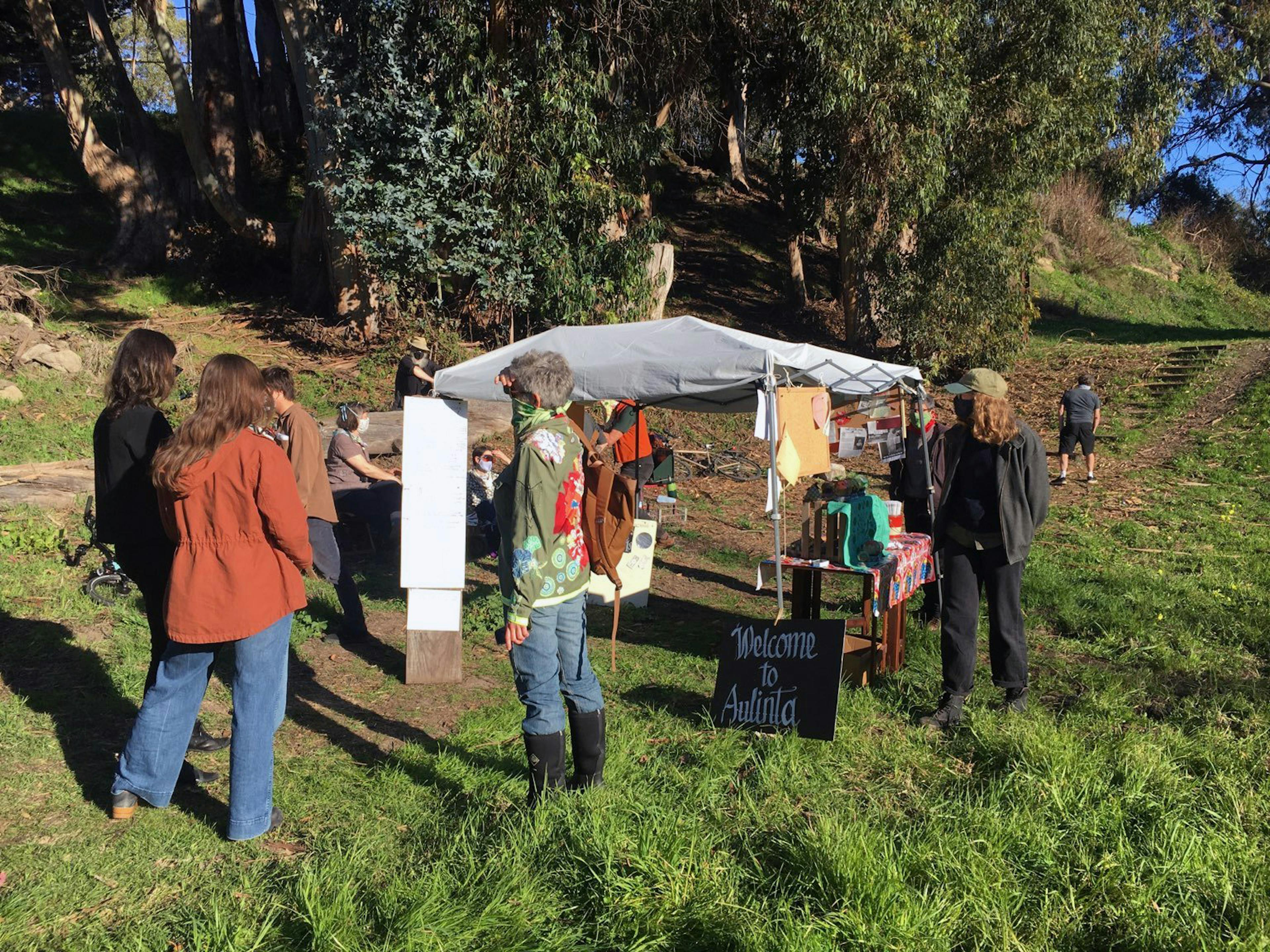
Phoebe Marsh visitor center in Aulinta
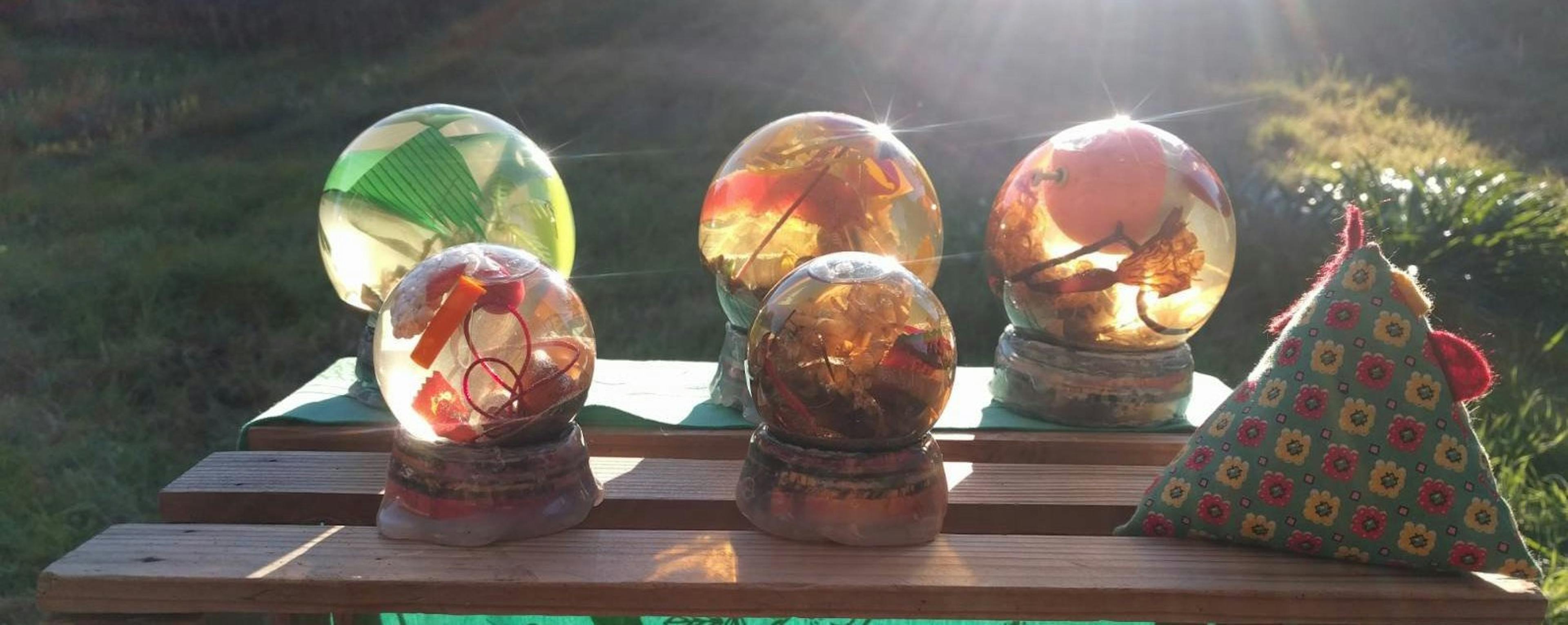
Discarded plastics from the pre-revolutionary era are repurposed into artful “garbage globes” in Aulinta.
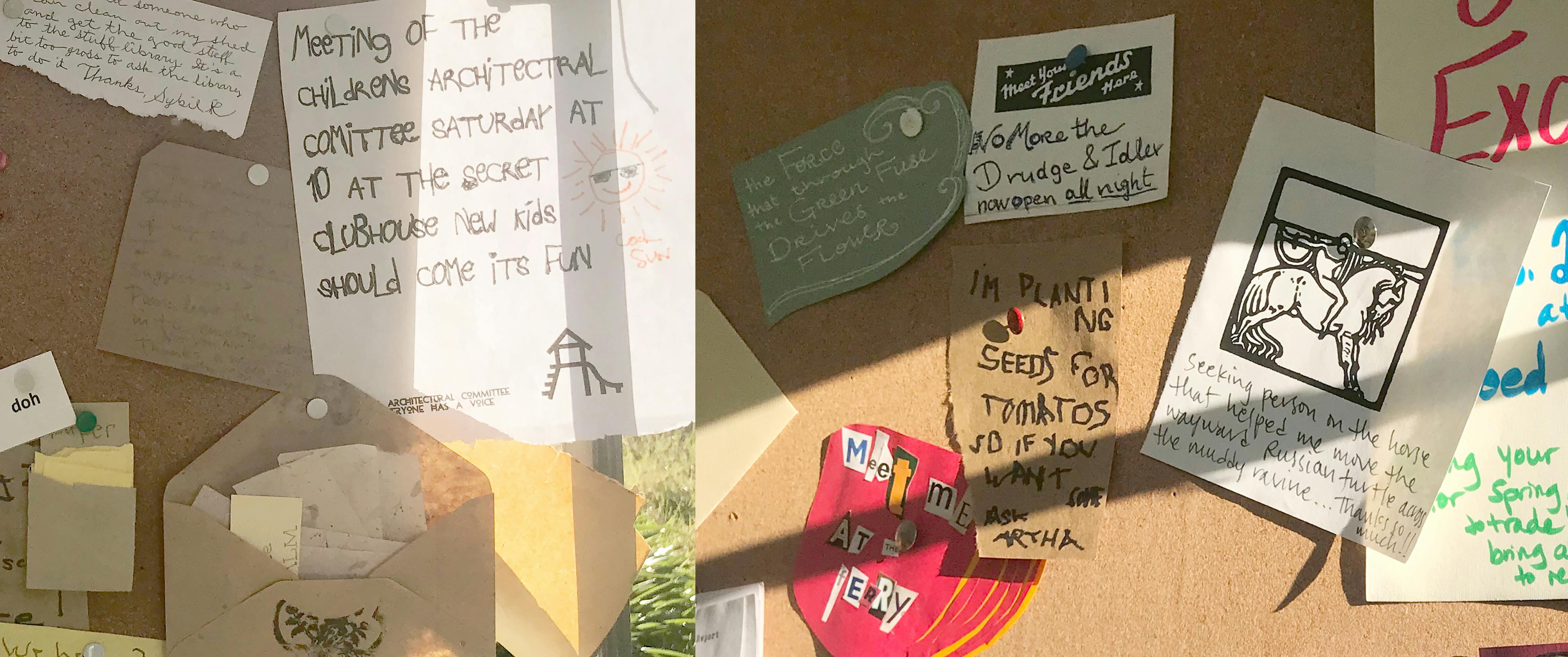
Messages from yesterday's future that might have been and still could be: bulletin boards at the Phoebe Marsh Visitor Center in Aulinta
Agit-propagation

The Ecosocialist Working Group's Critical Conservation Corps provided guidance on the theory and praxis of agit-propagation...
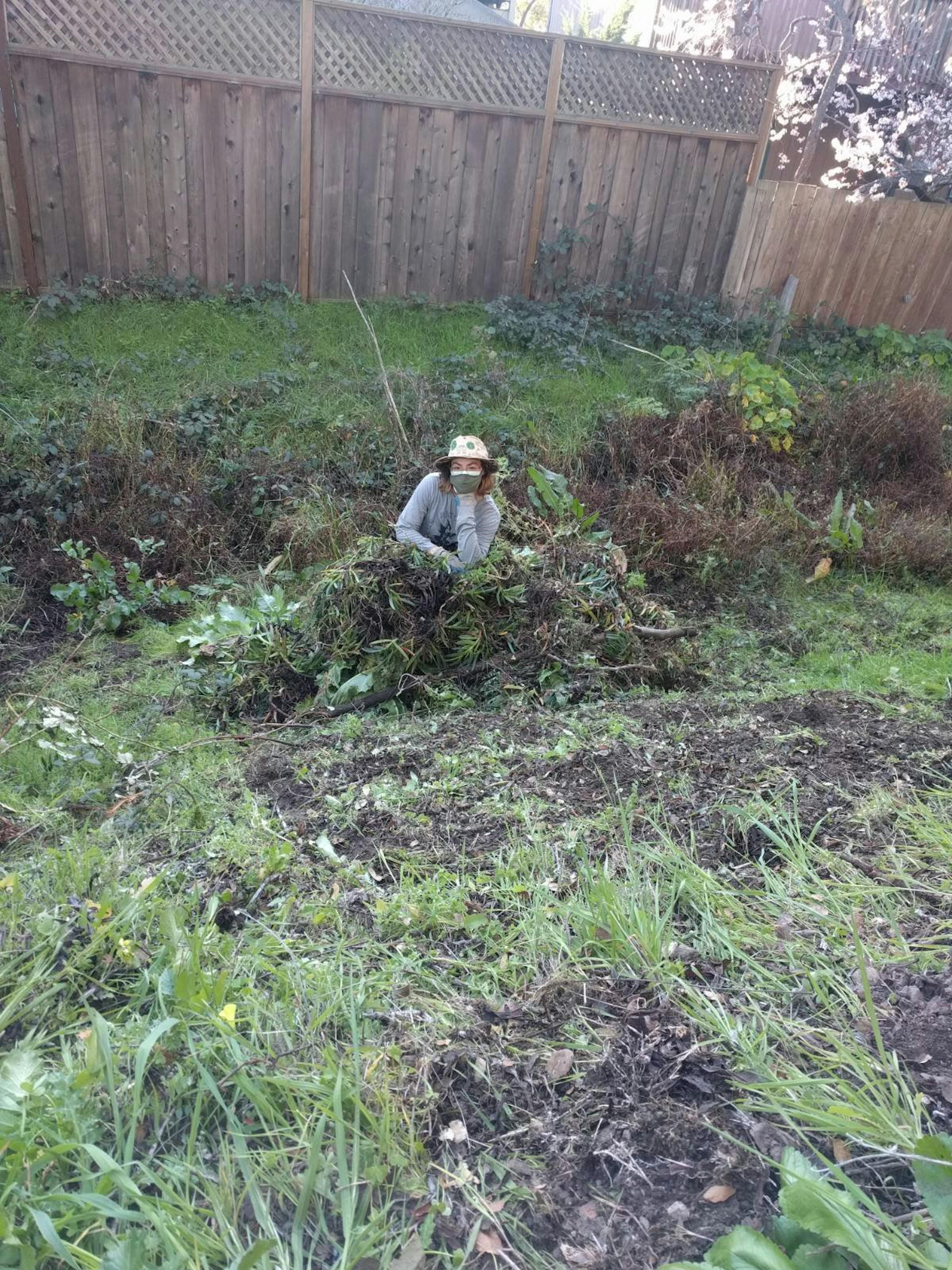
... introducing concepts such as the commons as well as guiding visitors in hands-on stewardship activities.

Tending the saltwater marsh
Find out more about the Ecosocialist Working Group!
Contact: ecosocialism@dsasantacruz.org
